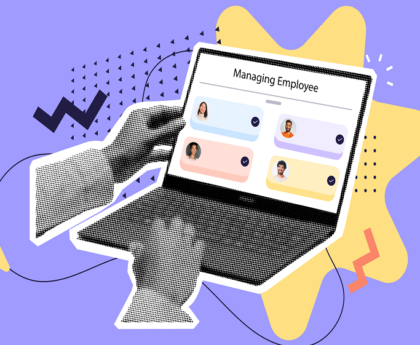Limiting work hours may diminish employees’ motivation to compete and reduce their productivity, according to many business owners. Overworking has become a prevalent issue that can lead to burnout, decreased productivity, and negative effects on employee well-being. To combat this problem, many organizations are turning to employee tracking as a proactive measure to prevent overworking. In this blog post, we’ll explore how an advanced employee tracker can help prevent overworking and create a healthier, more productive workplace.
How Employee Tracking Helps Prevent Overworking?
Monitoring Work Hours
Employee tracking software allows employers to monitor the number of hours employees work. By setting clear expectations for working hours and tracking actual hours worked, organizations can identify employees who consistently exceed their designated work hours, potentially indicating overwork.
Overtime Alerts
Modern employee tracking systems can generate alerts when employees approach or exceed their overtime limits. This proactive approach enables managers to intervene and discuss workload distribution, ensuring that employees are not unnecessarily burdened with excessive overtime.
Task Management and Prioritization
Employee tracking tools often include task management features. By monitoring task completion and the time spent on each task, organizations can identify employees who may be overwhelmed with too many responsibilities. This insight enables managers to adjust workload distribution and prioritize tasks effectively.
Resource Allocation
Organizations can make data-driven decisions about resource allocation. If certain employees consistently work longer hours, it may be an indicator that additional resources or team members are needed to share the workload and prevent overworking.
Monitoring Remote Work Patterns
As remote work becomes more common, monitoring remote employees’ work patterns is essential. Employee tracking tools can help ensure that remote workers are adhering to their designated work hours and not overworking due to the lack of physical separation between the office and home.
Besides, employee tracking data can be used to encourage work-life balance. Managers can use the information to have constructive conversations with employees about the importance of taking breaks, using vacation time, and disconnecting from work outside of designated hours.
Addressing Stress and Burnout
Recognizing signs of stress and burnout early is crucial. Employee tracking data can reveal patterns of prolonged overworking, enabling organizations to intervene and offer support to employees who may be at risk of burnout. This proactive approach can prevent long-term negative consequences for both the employee and the organization.
Compliance with Labor Laws
Employee tracking helps organizations ensure compliance with labor laws and regulations regarding working hours, overtime, and breaks. This not only prevents overworking but also protects the organization from potential legal issues.
Preventing overworking is not only about adhering to legal requirements but also about creating a positive workplace culture. When employees see that their organization values their well-being and respects their time, it can lead to higher job satisfaction and morale.
Conclusion
Employee tracking, when used responsibly and transparently, is a valuable tool for preventing overworking in the modern workplace. It allows organizations to monitor work hours, identify overtime patterns, manage tasks effectively, promote work-life balance, and address stress and burnout proactively. Ultimately, this benefits both the well-being of employees and the success of the organization.




